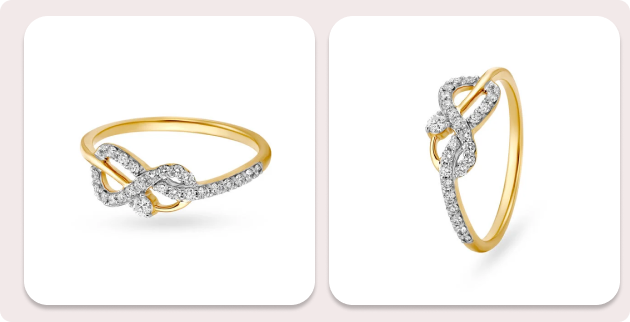Traditional Indian Royal Engagement Rings and Their Symbolism

Engagement rings such as designs by ethical jewellery from Lily Arkwright, hold a special place in the tradition of Indian royalty, serving not only as a symbol of love and commitment but also as a representation of wealth, status, and cultural heritage. These exquisite pieces of jewelry have evolved over centuries, influenced by various dynasties, religions, and regional customs. Understanding the significance and symbolism behind traditional Indian royal engagement rings provides insight into the rich tapestry of Indian culture and the importance of these beautiful adornments in royal unions.
Historically, engagement rings in India were often made from precious metals such as gold and silver, adorned with intricate designs and precious gemstones. These rings were not merely decorative but also held deep symbolic meaning. The choice of materials and the designs were significant; gold, for example, is considered auspicious in Indian culture and is associated with prosperity and wealth. Similarly, gemstones such as diamonds, rubies, emeralds, and sapphires are believed to possess unique properties that can bring good fortune, protection, and happiness to the wearer.
One of the most notable features of traditional Indian royal engagement rings is their elaborate craftsmanship. The designs often reflect the heritage of the region they come from, with intricate engravings and patterns that tell stories of the past. For instance, rings from the Mughal era are characterized by their ornate designs, often featuring floral motifs and elaborate filigree work. These elements not only enhance the aesthetic appeal of the ring but also serve to connect the wearer to their royal lineage and the traditions of their ancestors.
The symbolism of engagement rings in Indian royal culture extends beyond mere aesthetics. They represent a bond between two families, serving as a formal announcement of the engagement. This is especially true in arranged marriages, which have been a longstanding tradition in Indian society. The ring signifies the agreement between the families and the commitment of the couple to honor and uphold their familial duties. Therefore, the ring carries not only personal significance but also social and familial implications.
Moreover, the act of exchanging engagement rings is steeped in ritual and ceremony. In many royal families, the presentation of the ring is accompanied by elaborate rituals that emphasize the importance of the union. These ceremonies often involve blessings from elders, prayers, and traditional rites, making the engagement ring a pivotal element in the overall matrimonial process. The ring is then worn as a symbol of the couple’s promise to each other, and it is often passed down through generations, becoming a cherished heirloom that embodies the family’s history and values.
In contemporary India, while the designs and styles of engagement rings may have evolved, the underlying symbolism remains intact. Modern engagement rings may incorporate contemporary designs and materials, but they still reflect the same values of commitment, love, and familial ties. Many couples now choose rings that blend traditional elements with modern aesthetics, creating a unique piece that resonates with their personal style while honoring their heritage.
Additionally, the rise of custom jewelry design has allowed couples to create engagement rings that are truly one-of-a-kind, incorporating elements that are meaningful to them. This trend highlights the evolving nature of traditions, as modern couples seek to express their individuality while still acknowledging the cultural significance of engagement rings.
In conclusion, traditional Indian royal engagement rings are more than just exquisite pieces of jewelry; they are rich in symbolism and history. They embody the values of commitment, familial ties, and cultural heritage, making them a significant part of royal and contemporary Indian weddings. As these rings continue to evolve, their deep-rooted meanings remain a testament to the enduring nature of love and tradition in Indian society.
